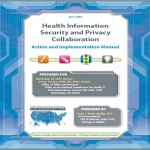State HIE Cooperative Agreement Program:
Frequently Asked Questions (Main FAQ Page)
General Questions
Questions for Potential Applicants
September 11, 2009 deadline for State HIE Letter of Intent was reconfirmed in the 10 Questions and Answers about the State HIE Program posted in the FAQs on the ONC site as of September 1, 2009. ONC encourages users to check its FAQ page frequently since regular changes are expected.
GENERAL QUESTIONS include purpose and goal of State HIE agreement, state role in “meaningful use” of EHRs by 2014, working relationship of states to federal government and private sector, and addressing differences in levels of HIE and EHR adoption between and within states.
QUESTIONS FOR POTENTIAL APPLICANTS are used to explain who is eligible, describe application process; clarify deadline for Letter of Intent–September 11, 2009; explain rolling schedule for grant awards, describe ONC-State integration of existing State HIE plans within new HIE grants framework, and confirm that all states and territories will be funded for HIEs.
Facts-in-Brief
Deadline: ONC reconfirmed that the deadline for each state’s Letter of Intent is September 11, 2009.
Fund: ONC intends to provide each state and US territory an exclusive grant as an individual state or as part of a multi-state application that succesfully fufills the application requirements. Total of $564 million will be awarded on a rolling basis beginning in January 2010, including for planning purposes where necessary.
Exclusive: Only the State or a State-Designated Entity in each state or territory, either individually or as part of a multi-state program, will receive an award. ONC will only accept one application per state or territory, though multi-state initiatives may apply. To ensure every state and territory is covered, ONC may eventually make award to another entity if an application is not submitted.
Three Level Evaluation: States must determine where they are in the process of implementing health information exchange: “no existing plan; non-compliant existing plan; compliant existing plan.” ONC will work with each state to integrate existing state plans with the requirements of “meaningful use.”
ONC Web site on State HIE Cooperative Agreement Program: The ONC page contains links to Announcement, location for official documents, Facts-At-A-Glance, and FAQs.
Prior e-Healthcare Marketing post with ONC State HIE Deadlines
REGIONAL CENTERS PROGRAM FAQ UPDATES CONTINUE
As ONC promised, FAQs on Regional Extension Centers Program will continue to be updated. Updates for Sept. 2, 2009 are occurring today. See prior e-Healthcare Marketing post for links, and remember to check back for both sets of FAQs. Or go directly to ONC FAQs about Regional Extension Centers Program.

